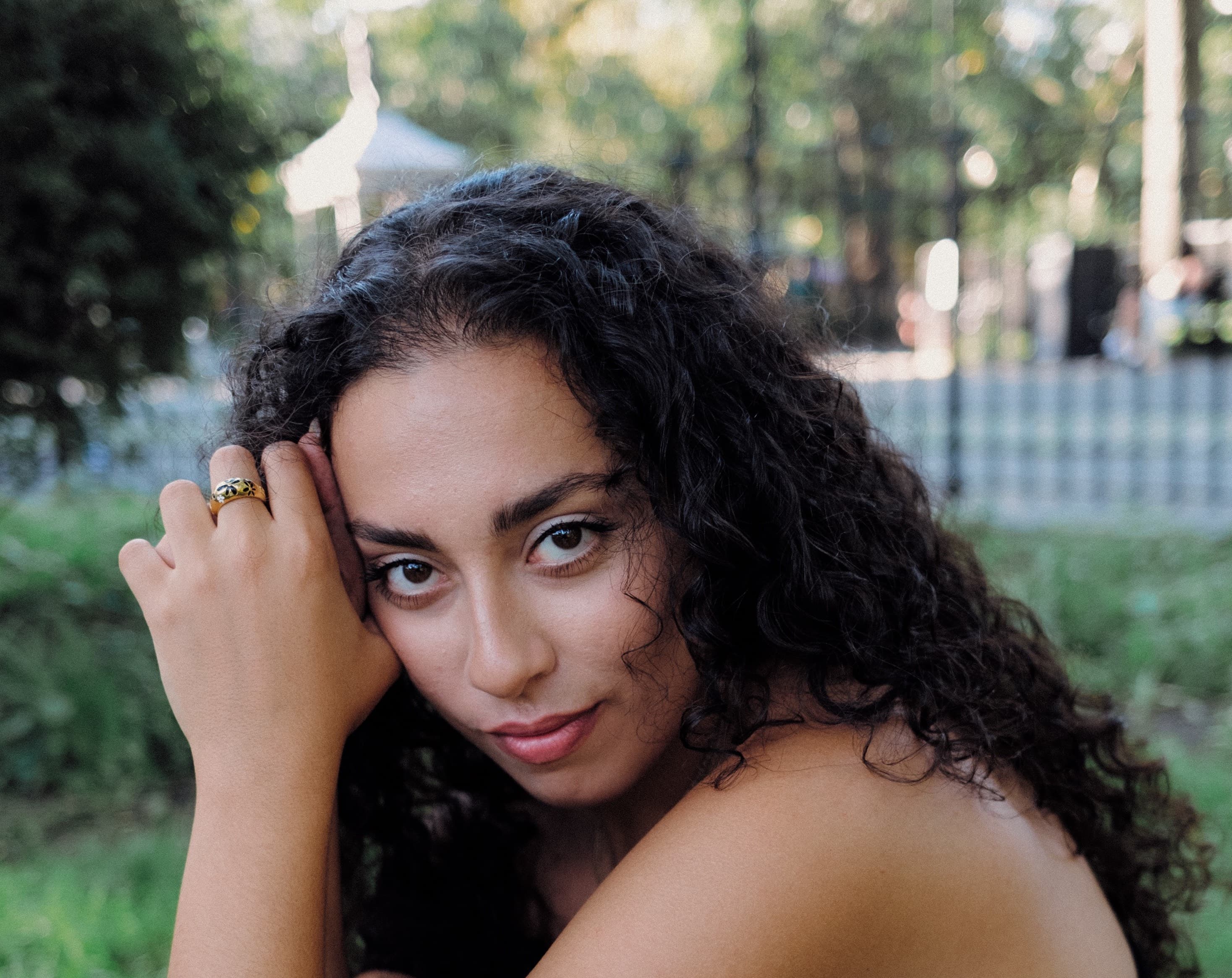Four Artists Doing It Differently, According To Reilly Davidson
For the writer, curator, and gallerist, finding talent with "true verve" isn't easy, but these four creatives are refreshing the art world.

Maggie Friedman, Untitled (Susan Cianciolo Run 13), oil on canvas, 2022, 84 x 80 1/2 inches. Image courtesy Hannah Hoffman Gallery.
Published
4 Ways is a column that asks four people how they would do one specific thing. As part of Hacking It, in collaboration with Urban Outfitters and Dickies, we asked four experts in four different industries to name four people approaching their worlds in unique, non-traditional ways.
Any attempt to track down the pulse of “now” is a fool’s errand, with the frenetic globalization of art-making and trading bolstering increasingly transitory aesthetic movements. By seeking out pockets of true verve, one is able to sustain a certain potentiality. In keeping with this, the four artists here proffer singular visions for what production can look like when it is unfettered by the pollution of populism. That is not to say that these four do not operate in tandem with the historicity. Rather, their evasions of contemporary “grasping at straws” attitudes set them closer to the pulse of sincere poises.
Tina Braegger

Tina Braegger has established her own niche, surreptitiously painting The Grateful Dead’s enduring icon. Through repetition and prismatic formal experimentation, she explores the ontology of a cultural object as it moves from its origins into the realm of the bootleg. Her initial encounter with a canvas always precludes the dancing bear, thus eliding any moment of blankness. The circulation of images, distance from context, and abstraction of form are all frameworks that Braegger tracks in her imaginal pursuits. Meaning filters into happenstance. When confronted with anything, a confluence of roads opens up, in accordance with that thing, a network of opportunities for progression—one to many, many to one. Braegger has investigated this thing, the hippie icon, for over a decade. Its proliferation across canvases, books, and sculptural objects has been inexhaustible. These bears fold into themselves, stretch across the surface, and break apart entirely.
Christine Burgon

Having recently defected from Chicago to rural Wisconsin, Christine Burgon melds a bucolic lifestyle with her intense studio practice. Under her direction, a composition can take anywhere from a handful of days to a few years. With each painting, she proposes something refreshingly new, despite the forms and brushwork that recur throughout her protean oeuvre. In an email exchange, Burgon clarifies that she views each painting as “a temporary solution to constant problems,” collapsing “the medium’s history, social force, and material weight” onto every surface. She also pursues her compositions with remarkable awareness of the artist’s situation, positing that “expecting something like freedom from something so steeped in conventions is partly what I mean when I say that I approach each painting as a stubborn deficiency that forces continuity with the past and the present and allows me to acknowledge myself as a person of consequence with preexistent material circumstances; dejected, prurient, comedic, ecstatic, etc. alive.”
Maggie Friedman

Maggie Friedman’s body of work proffers the ideas and mind-images that she mines from life and history. Between her writing and painting practices, she inscribes recognizable forms and thought patterns that point toward her referential index, referring to her practice as “fanfiction adjacent.” Stills from The Painter, the documentary that traverses Albert Oehlen’s career, and
works from the artist’s Gagosian exhibition earlier this year are Friedman’s current preoccupations. She also reimagines paintings from Silke Otto-Knapp’s exhibition at Regen Projects, which was also staged in 2023. This is both a move to align herself with the artists she reveres and to “build upon what they've added to painting’s discourse.” Friedman also abstracts stock images and typography as a means of dialoguing with scattershot materials from life. The paintings often appear as propositional matter, with questions of authorship, identification, and individualism filtering into the mix.
Alexandra Metcalf

Alexandra Metcalf surfs across mediums with ease. Whether laying out decoupage and oil paint on canvas or excavating forms from wood, she maintains a continuous sensitivity toward her objects. Her disparate media are bent into a dialogical center, where they cavort and reinforce one another. Archival imagery enters the fold, initiated by Metcalf’s idiosyncratic process of seeking and selecting. Her palette largely revolves around yellow, pink, and blue, oscillating between pastels and their murkier counterparts. She expertly folds in neon to compliment her pool of colors. Metcalf approaches her material repository from a matter-of-fact disposition, after which point her own discerning gaze floods into as the production gets underway. In toggling the universal alongside the individual, she weaves melancholy, play, and a perverse femininity into her variegated objects. Whether canvas-oriented or geared toward object-play, Metcalf specifically targets notions of “dismantled grief, and the severed ties between the nuclear household that presents itself through sort of coming-of-age narratives.”




